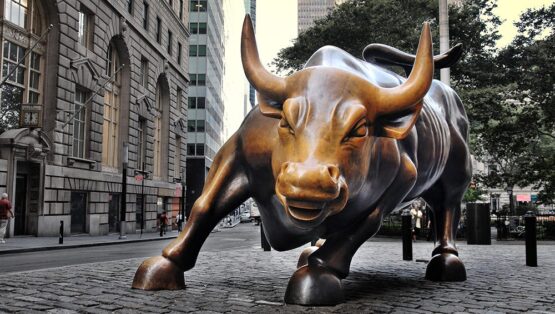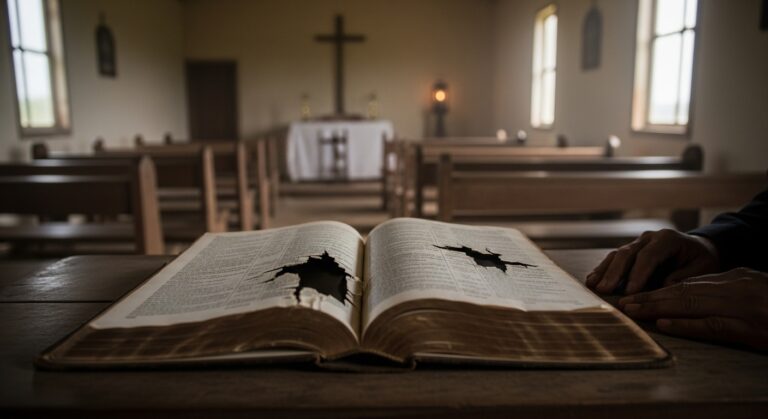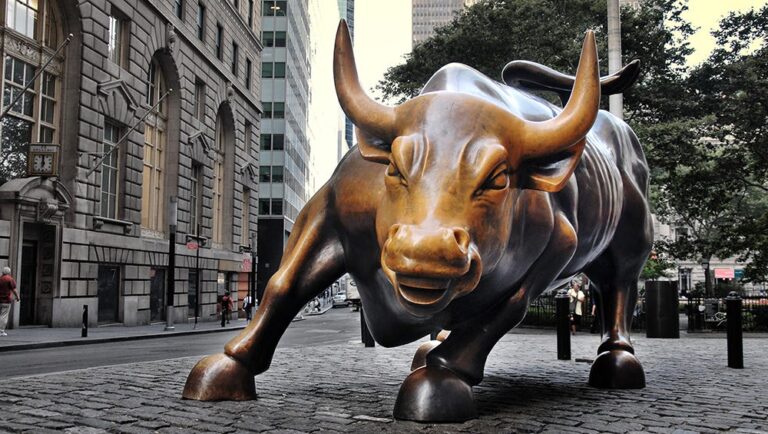Before you start investing in stocks, ETFs, or retirement accounts, there is one step that comes first: building an emergency fund. This is not the exciting part of finance. It does not make headlines or get you bragging rights at parties. But it is the foundation of everything else you will do with your money.
Let me break it down a little bit with an example.
Many people dream about living off dividends. Suppose you want to earn $100 a month from an ETF like SCHD, which is a popular dividend-paying fund. Sounds simple, right? Just buy shares and wait for the quarterly payouts. But here’s the reality: SCHD pays around $2.64 per share each year. To make $1,200 annually, or $100 a month, you would need about 455 shares. At roughly $75 a share, that means you must invest over $34,000 just to get that income.
For someone starting with $1,000 or less, that goal is out of reach right now. It does not mean investing is bad. It just shows that big investing results require time, patience, and large amounts of money.
That is why the very first step is an emergency fund. With even $250 set aside, you get immediate protection. If your tire blows out, your phone breaks, or you face a small medical bill, you do not need a credit card or a loan. You already have the cash. Unlike chasing dividends, the benefit of an emergency fund is instant.
So before you chase passive income, start with financial safety. An emergency fund is the foundation. Once that is in place, then you can focus on building investments that grow over time.
In my earlier article on how I would invest $1000 for financial stability, the very first step was setting aside $250 into a high-yield savings account. Let’s break down why that step matters, what an emergency fund really is, and how to start building yours today.
Build an Emergency Cushion ($250)
If you want to invest money wisely, start with a small safety net first. Putting $250 into a high-yield savings account is a smart first move. It protects you from small shocks and buys you time to make better choices when something goes wrong. Below I will explain why $250 matters, where to keep it, how to open the right account, and how to use and grow the cushion over time.
Why start with $250
Two hundred and fifty dollars is not a full emergency fund. It is a beginning. It matters because it prevents small problems from becoming big ones. For example, if your phone screen cracks or you need a last-minute taxi, having $250 means you do not need to borrow on a credit card or panic. Having some cash set aside reduces stress. It also builds the habit of saving.
Starting with a small amount keeps the goal realistic. Many people never save because they think they must set aside hundreds of dollars at once. A smaller goal is easier to hit. Once you reach $250, you feel a small win. That win makes it easier to add more later.
Where to put the $250
Put the money in a high-yield savings account rather than a checking account. A high-yield savings account pays higher interest than most regular bank accounts. That means your money grows a little while it waits. The growth is not large, but it beats keeping cash in a low-interest account.
Choose an account from a reputable online bank or credit union. Examples include SoFi, Ally, and Marcus. Before you pick a bank, check these things:
- Confirm the bank is FDIC insured. That means your money is protected up to the insurance limit.
- Compare the annual percentage yield, or APY. Higher APY means more interest.
- Check for monthly fees or minimum balance requirements. Avoid accounts that charge fees for small balances.
- Look at how easy it is to move money in and out. A good mobile app and quick ACH transfers make life simpler.
One quick example of interest
Small interest still helps. If your $250 earns 3 percent interest in one year, the math works like this: multiply 250 by 1.03. That equals 257.50. After a year, your $250 grows to $257.50. The difference is small, but every bit helps and it costs nothing to let it sit there.
How to open the account, step by step
- Choose the bank. Compare APY, fees, FDIC insurance, and mobile app reviews. Pick the bank that fits your needs.
- Prepare your documents. Have your Social Security number, a photo ID such as a driver’s license, and your address ready.
- Go to the bank’s website or open the mobile app and click “open an account.” Select high-yield savings.
- Fill out the online form with your name, date of birth, address, and Social Security number. Create a strong password you will remember.
- Link an external bank account. You will need your routing number and account number from your current bank.
- Verify the link. The bank will usually send small test deposits to your other account. Confirm those amounts in the app to finish linking.
- Transfer $250. Once the accounts are linked, move $250 from your checking account to the new high-yield savings account.
Rules for using the emergency cushion
A cushion only works if you treat it as money for real emergencies. Use these simple rules:
- Use the money for urgent, necessary costs only. Examples include emergency medical expenses, urgent car repairs, or immediate travel for a family emergency.
- Avoid using the cushion for wants, such as impulsive shopping or nonessential subscriptions.
- If you use some of the money, replenish it within a reasonable time, such as within one month or two, depending on your budget.
- Keep the account separate. Do not use your high-yield savings account like a regular checking account. That separation helps you resist temptation.
How to grow the cushion over time
Two hundred and fifty dollars is the start. Work toward a bigger fund in small steps. Try one or more of these approaches:
- Automate regular deposits. Move a small amount automatically each payday. Even $25 per month adds up.
- Increase contributions when you can. If you get a small raise or side income, direct some of it to the emergency fund.
- Reinvest small windfalls. Tax refunds, gifts, or one-off payments are great times to add to the cushion.
- Set a target. Aim for at least one month of essential expenses, then build to three months, and later to six months if you can.
What comes after the cushion
Once you have a solid cushion, you can move more money into investments. The emergency fund is the foundation. After it is steady, you may feel safer buying ETFs, stocks, or contributing to retirement accounts. Start small with investments. Keep the cushion untouched unless it is a true emergency.
Why the Emergency Fund is the Foundation
Think of your financial life as a house. You want to build it tall and strong with investments, retirement accounts, and maybe even real estate one day. But no matter how beautiful a house is, if the foundation is weak, the whole thing can collapse. That is exactly what an emergency fund does for your money life. It is the foundation.
Imagine this: your car suddenly breaks down and the repair costs $600. If you do not have cash set aside, you might swipe a credit card with a 25 percent interest rate. That $600 turns into $700 or more over time, and you are stuck paying it off month after month. Now imagine the same situation with an emergency fund. Instead of reaching for a credit card, you take money from your cushion, fix the car, and later replenish the account. No debt. No stress.
The end goal is peace of mind. An emergency fund means that when life throws surprises — a lost job, a medical bill, a broken fridge — you can handle it without panicking. You will not be forced to sell your investments early, borrow money, or pause your long-term goals. That is why financial experts always call the emergency fund step one. It steadies the ground so everything else you build stands firm.
What an Emergency Fund Really Is
An emergency fund is simply money set aside in a safe, easy-to-reach place for unexpected events. It is not for vacations, shopping, or upgrading your phone. It is for emergencies only — the kind that truly disrupt your daily life if you cannot pay for them right away.
So, how much should you build? Most experts, including the Consumer Financial Protection Bureau and many personal finance authors, recommend three to six months of essential living expenses. That means if your rent, food, transportation, and bills cost $2,000 a month, your emergency fund should eventually hold between $6,000 and $12,000.
Now, here is the important part: you do not need that amount right away. If you are just starting, focus on $250, then grow to $1,000. Research shows that even having $500 to $1,000 can protect most families from going into debt over common emergencies like car repairs or medical bills. From there, keep adding slowly until you reach that three-to-six-month cushion.
The key is to keep the money in a safe place, usually a high-yield savings account. This way, it earns a little interest while staying available whenever you need it.
Common Mistakes People Make with Emergency Funds
Many people try to build an emergency fund but fall into traps that weaken it. Here are the biggest mistakes to avoid:
- Treating it like a checking account. If you dip into it for everyday spending, it will not be there when you truly need it.
- Investing it in risky assets. Stocks, crypto, or ETFs may go down just when you need the money. Keep your cushion safe.
- Forgetting to replenish it. If you spend some of it, rebuild it right away.
- Not separating it from everyday money. If it sits in the same account as your bills, you are more likely to spend it.
Where Not to Keep Your Emergency Fund
It is important to park this money in the right place. Keeping cash under the mattress risks loss from theft or accidents. Putting it into stocks or crypto exposes it to market swings. Imagine losing your job and realizing your emergency fund dropped 20 percent in value at the same time.
The best home for this money is a high-yield savings account or money market account. Both are safe, liquid, and usually FDIC insured. You will not get rich off the interest, but your money will grow a little while staying accessible.
Emotional Benefits of an Emergency Fund
Money stress is one of the biggest causes of anxiety. When you have no cushion, every surprise feels like a crisis. A medical bill, a flat tire, or even an unexpected school fee can send you spiraling.
An emergency fund changes that. Knowing you have cash tucked away lets you breathe easier. You sleep better at night. You make decisions calmly instead of in panic mode. The financial benefit is clear, but the mental benefit is just as powerful.
A Real-Life Scenario
Let’s imagine you lose your job for two months. Rent is due. Bills keep coming. Groceries still need to be bought. Without an emergency fund, you may borrow from friends, run up debt, or even risk eviction.
Now picture the same event with a $6,000 emergency fund. You dip into it, cover your expenses, and spend those two months focused on finding your next opportunity instead of fighting to stay afloat. The difference is not just financial. It is peace, dignity, and stability during a storm.
How to Open a SoFi High-Yield Savings Account and Stay Consistent
One of the easiest ways to start your emergency fund is by using an online bank like SoFi, which currently offers a competitive interest rate on savings. The process is simple, and you can set it up in less than 15 minutes.
Step 1: Go to SoFi.com: Visit SoFi’s website or download the mobile app. Click “Open an Account.”
Step 2: Choose “SoFi Checking & Savings”: SoFi combines checking and savings into one account. Within it, you can set up a dedicated savings bucket for your emergency fund.
Step 3: Fill in Your Details: You will need your Social Security number, a government-issued ID, your address, and your email. Create a secure password you will remember.
Step 4: Link Your Bank Account: Enter your existing bank’s routing number and account number. SoFi will make small test deposits to confirm the link. Once verified, you can move money back and forth easily.
Step 5: Transfer Your First $250: Start by moving your $250 into the savings portion. This becomes your first cushion.
Step 6: Automate Future Deposits: To make sure your emergency fund grows, set up automatic transfers. Even $25 or $50 from each paycheck builds the habit. If you get paid biweekly, $25 per paycheck adds up to $650 in a year. Over time, that steady drip turns into a stronger cushion.
Why Automation Matters
It is easy to forget to save when life gets busy. By linking your main bank account and setting up automatic transfers, you remove the need for willpower. The money moves before you can spend it. This discipline is what separates “I want to save” from actually having a healthy emergency fund.
Final Thoughts
Saving $250 into a high-yield savings account is a simple step that makes life less stressful. It takes very little effort. It keeps you from making impulsive financial choices during a crisis. It also starts the habit of saving, which is the most powerful tool for future stability.
Your emergency fund is not the flashiest part of your financial life, but it is the most important. It is the solid ground that lets you invest, build wealth, and take risks without fear of collapse. Start with $250, grow it to $1,000, and over time aim for three to six months of living expenses.
Once you have this foundation, you can confidently move into investing. In fact, in my earlier article on how I would invest $1000 for financial stability, I explain exactly where I would put money once the emergency fund is in place.
The foundation comes first. Build it strong, and everything else will stand taller and safer.
⚠️ Disclaimer: I am not a financial adviser. This is simply what I would do personally. Please do your own research before making financial decisions.
Follow us on Facebook and Instagram for the latest updates and exclusive content!










